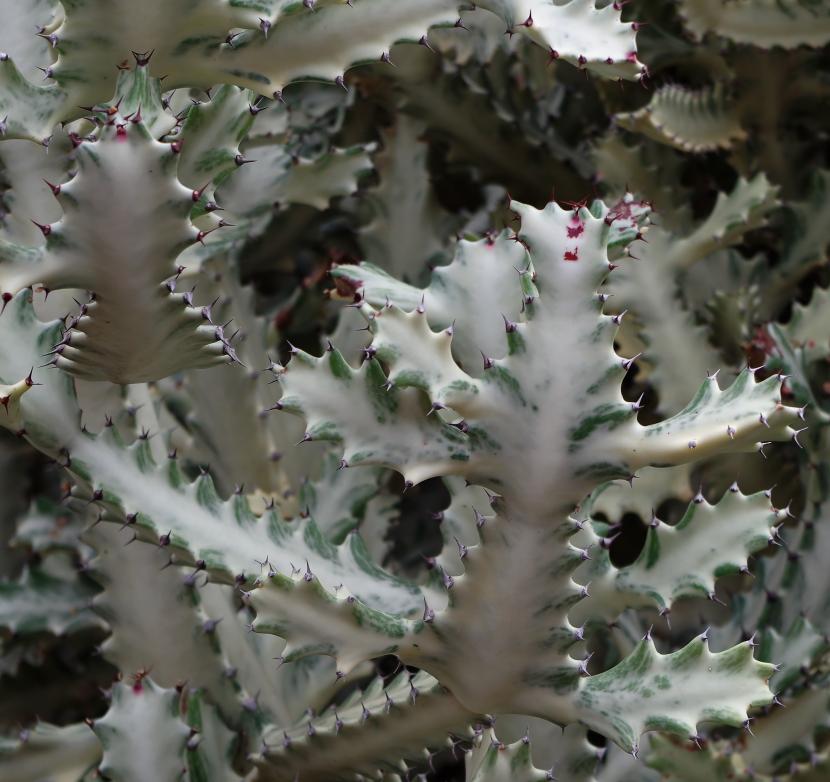
One of the most beloved succulents in the world is the Euphorbia lactea. Fast growing, it is a plant that is not demanding at all, except for its high light needs. It can be easily multiplied by cuttings, and it also adds a lot of color to any corner.
For all these reasons, I think you deserve to know its wonderful secrets. 🙂 You sure don't regret it.

Euphorbia lactea f. cristata 'White Ghost'
Euphorbia lactea is the scientific name of a succulent plant native to tropical regions of India and Sri Lanka. It was described by Adrian Hardy Haworth and published in Synopsis plantarum succulentarum in 1812.
It grows as a shrub up to 5 meters high, highly branched. The stems are between 3 and 5 cm in diameter, with a transverse or rhombic section. The ends are armed with short spines 5mm long. Sometimes you can see leaves, very small, but it is rare.
All parts contain a latex that, when in contact with the skin, causes itching, irritation and redness at best. That is why, every time it is handled, wear rubber gloves, such as kitchen ones, to avoid problems.
In nurseries we can find both the normal variety and the grafted cristata. You can see images of both in this article.

If we talk about their care, the Euphorbia lactea it is an easy plant. We have to place it in a sunny exposure so that it can grow properly, but it must be protected from frost as ice quickly damages the stems. In the event that we live in an area where winters are cold, we will have it in a very bright room and away from drafts.
Irrigation has to be low. We only have to give it water when we see that the substrate, porous and well-drained, is completely dry. It is important that, if we have placed a plate under it, we remove it ten minutes after watering, otherwise the roots will rot.
Another important issue is transplantation. Being a large plant we have to change it to a 3-4cm wider pot once a year or every two years, in spring. We can take advantage of this season to make stem cuttings, which we will let dry for a week before planting them in containers with vermiculite.

Euphorbia lactea f. crystal
For the rest, it will give us great satisfaction.